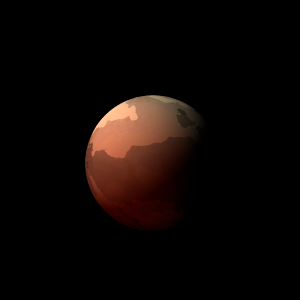|
|
Space Astro
|
Info for exoplanet "Nogyu"
| Scientific (actual) data |
|---|
| Name | Kepler-923 b |
| Planet status | Confirmed |
| Radius | 0.123 |
| Orbital period | 6.93366 |
| Discovered | 2016 |
| Updated | 2021-02-05 |
| Tconj | 2454970 |
| Publication | Announced on a website |
| Detection type | Primary Transit |
| Alternate names | 2MASS J19364106+4003186 b, K01665.01, KIC 4932442 b, KOI-1665 b, KOI-1665.01, WISE J193641.06+400318.5 b |
| Star name | Kepler-923 |
| Right ascension | 294.17° |
| Declination | 40.06° |
| Mag j | 12.978 |
| Mag h | 12.717 |
| Mag k | 12.665 |
| Star distance | 966 |
| Star metallicity | 0.07 |
| Star mass | 1.11 |
| Star radius | 1.26 |
| Star age | 4.68 |
| Star temperature | 5988 |
| Star alternate names | 2MASS J19364106+4003186, KIC 4932442, KOI-1665, WISE J193641.06+400318.5 |
| Wikipedia article | Kepler-923 b |
Back
| |
| Fictional info (?) |
|---|
| Suggested name | Nogyu |
| Planet type | Cold planet |
| It is the coldest planetary atmosphere in its solar system, with a minimum temperature of 25°K (-248°C), and has a complex, layered cloud structure with hydrogen thought to make up the lowest clouds, and hydrogen peroxide the uppermost layer of clouds. When viewed from Earth, this proximity to Kepler-923 means the planet can only be seen near the western or eastern horizon during the early evening or early morning.
The smooth Borealis basin in the northern hemisphere covers 14 percent of the planet and may be a giant impact feature.
Its north and south poles, therefore, lie where most other planets have their equators. |
| Atmosphere | Hydrogen peroxide | 80% |
| Hydrogen | 19% |
| Atmospheric pressure | 70 bar |
 |
| No known satellites |
| Google search for Nogyu |
|
Website by Joachim Michaelis
|
|
|
|